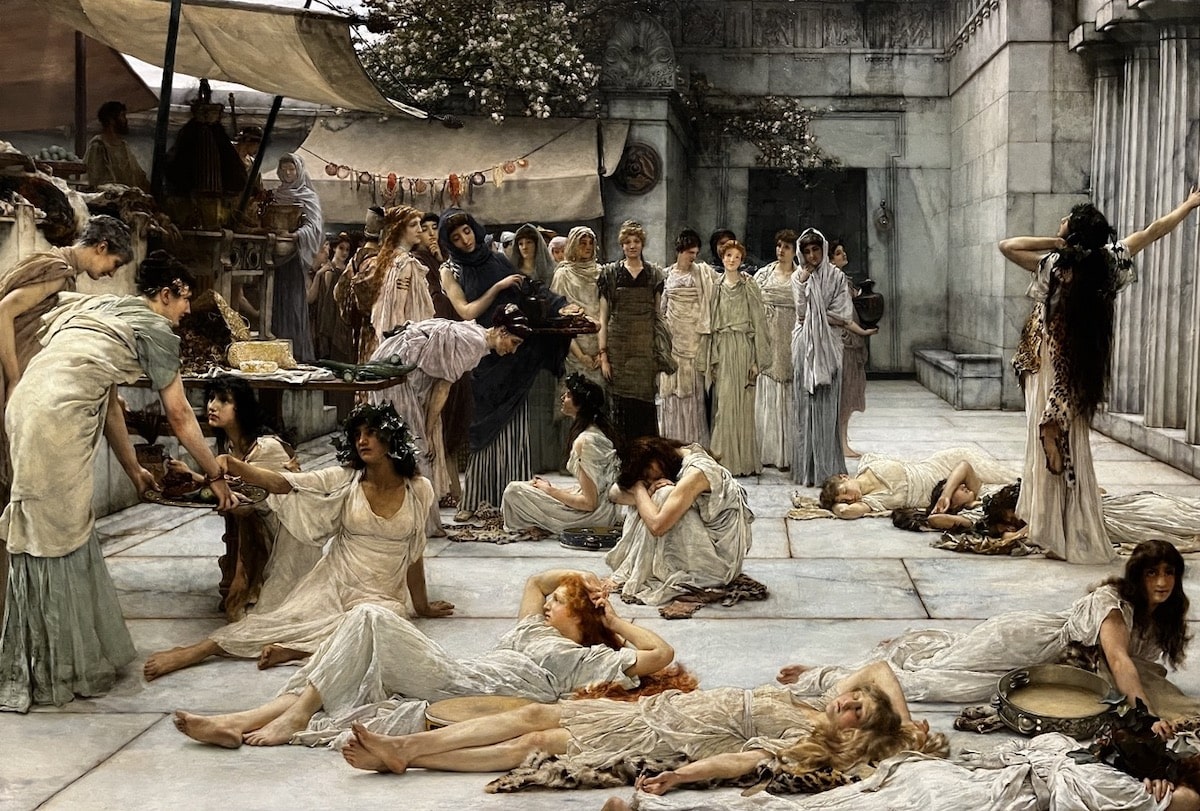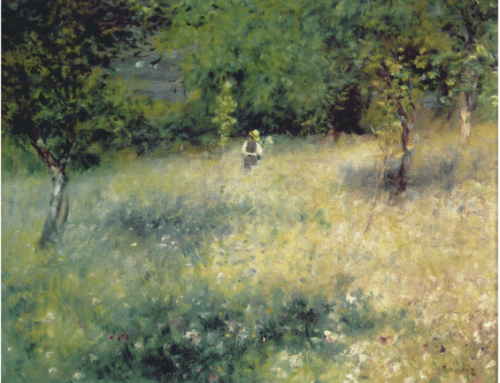“Art is Imagination and those who love Art love it because in looking at a picture it awakens their imagination and sets them thinking.” – Lawrence Alma-Tadema
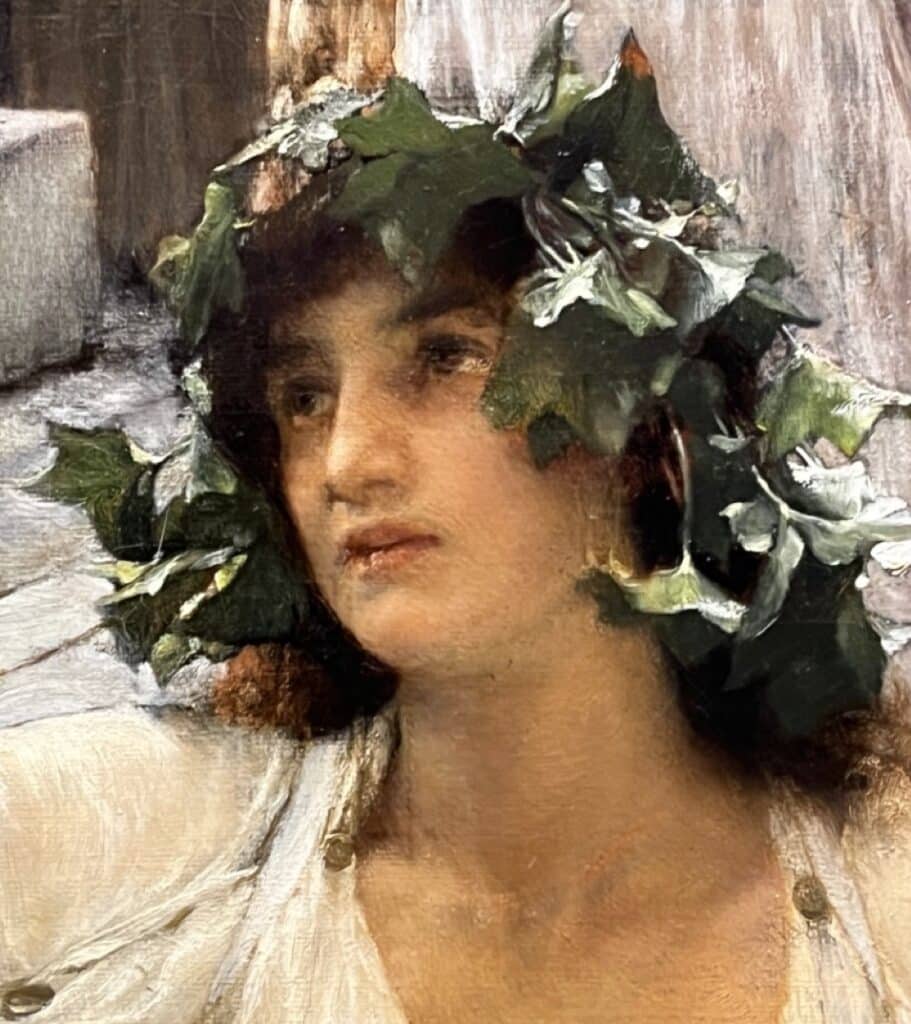
Detail from The Amphissian Women by Lawrence Alma-Tadema.
Sir Lawrence Alma-Tadema was one of the most popular painters of the Victorian era. His paintings with their lovingly rendered details delighted the public; critics, however, often noted a lack of drama in his work. Current art historians say the drama was there, it was just more subtle than Victorian audiences were used to seeing.
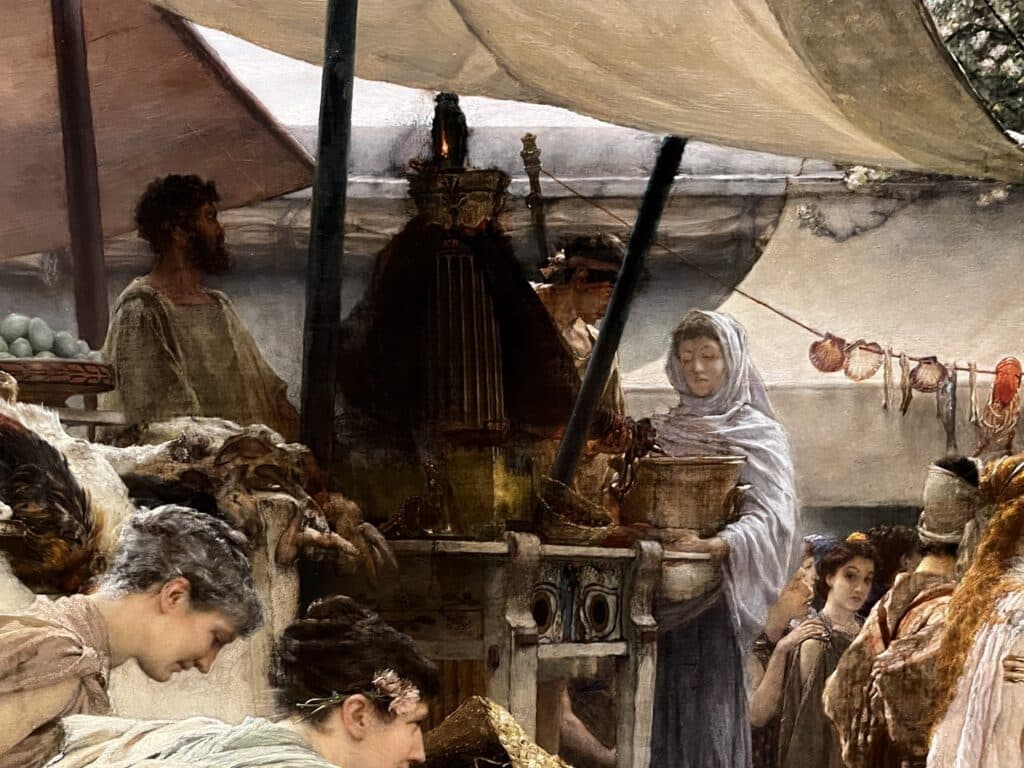
Detail from The Amphissian Women by Lawrence Alma-Tadema.
The painting titled The Amphissian Women is a case in point. It is among Alma-Tadema’s largest and most complex canvases. It’s a tour-de-force not only of elaborate and powerful compositions but of photorealistic mastery: a lush montage of marvelous surfaces (particularly his marble), textures, interior/ exterior spaces, and the stately female figures he draped in historical costume dress.
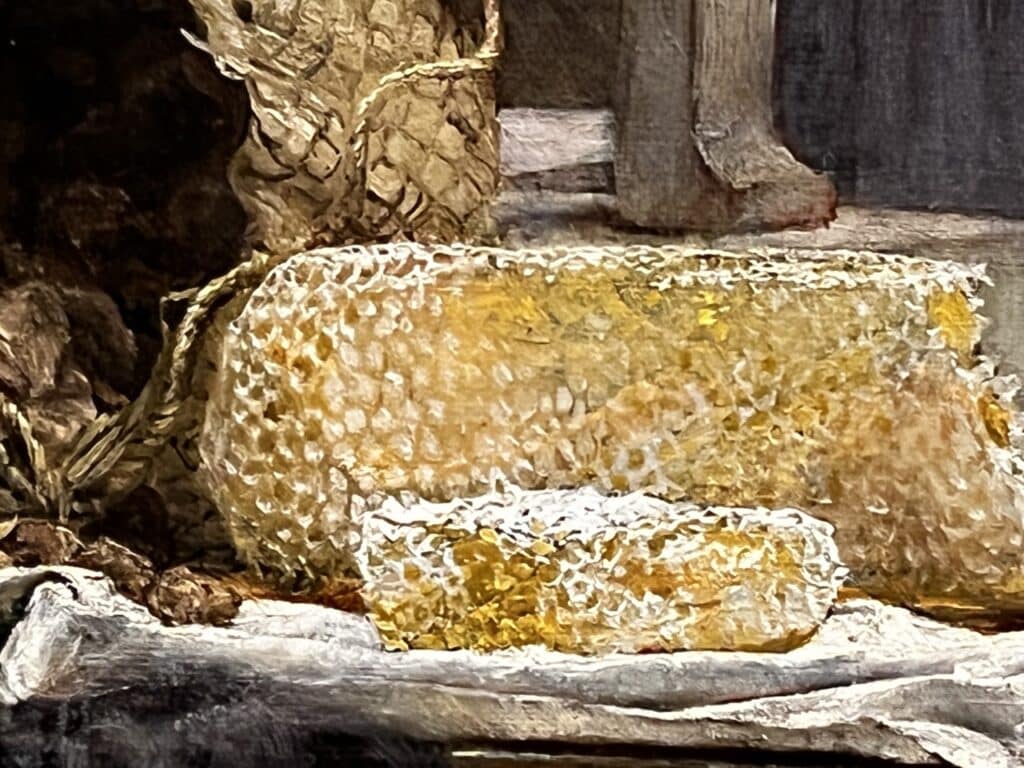
Raw honeycomb on linen: Detail from The Amphissian Women by Lawrence Alma-Tadema.
Looking at the details, you can see any number of paintings-within-paintings here. There are several beautifully composed still lifes in miniature and lots to see in terms of body language and the interactions between the figures.
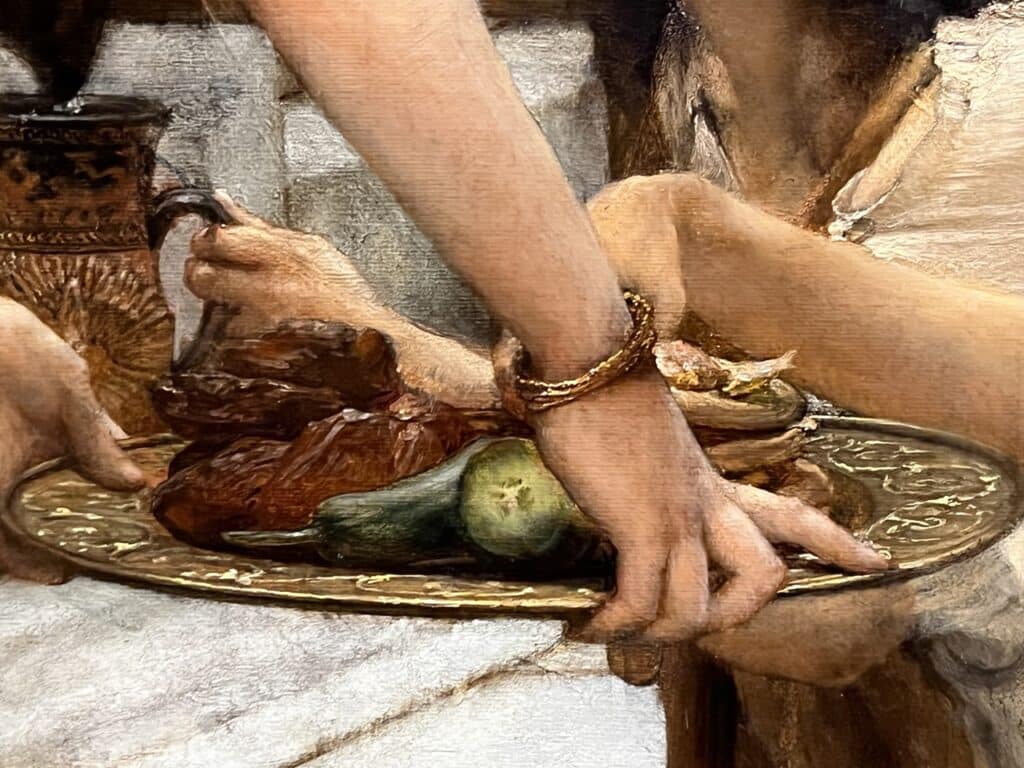
Detail from The Amphissian Women by Lawrence Alma-Tadema.
This painting is perhaps the only existing representation of an obscure ancient story about the priestesses of Dionysos, the god of wine and revelry.
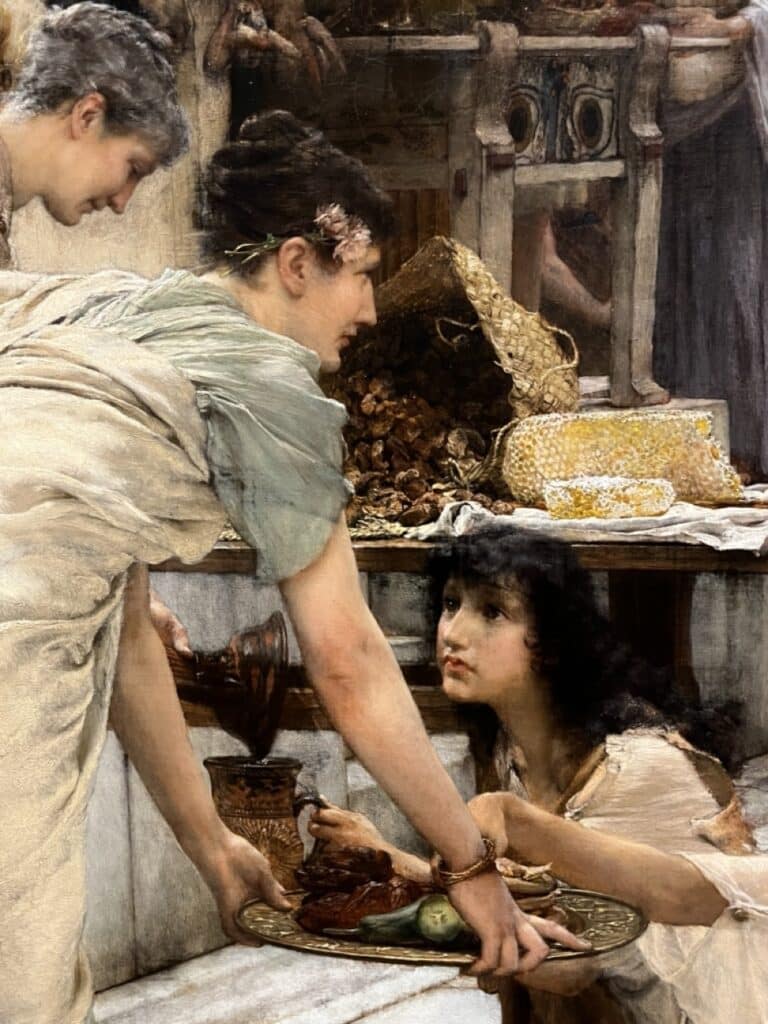
Detail from The Amphissian Women by Lawrence Alma-Tadema.
The story goes that Amphissia was at war a neighboring territory. A band of disheveled bacchantes (female priestesses/worshippers of Dionysos) who were from the enemy’s side got lost in the mountains during a night of revelry and ended up sleeping it off in Amphissia’s market square. Despite the war, says the Clark, the townswomen of Amphissa “graciously offered the bacchantes nourishment and protection.”
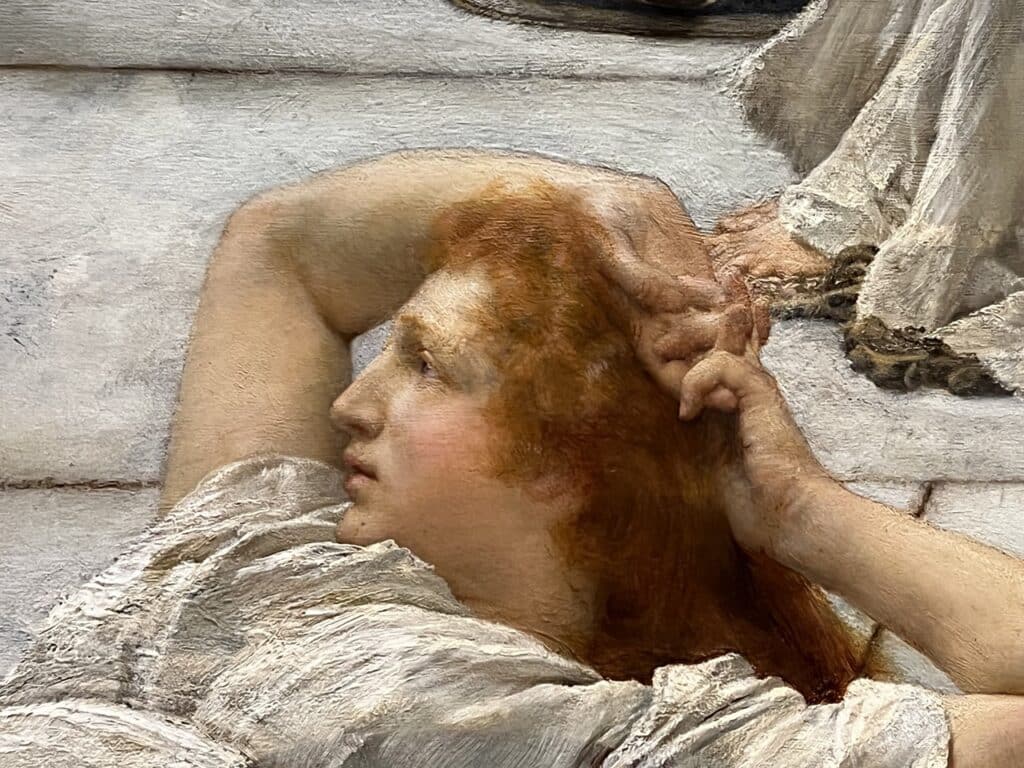
Detail from The Amphissian Women by Lawrence Alma-Tadema.
So, the Clark says Alma-Tadema used the subject to “stage a lesson in charity for his Victorian audience.” However, since the 1990s, some art historians have seen something else behind the curtain.
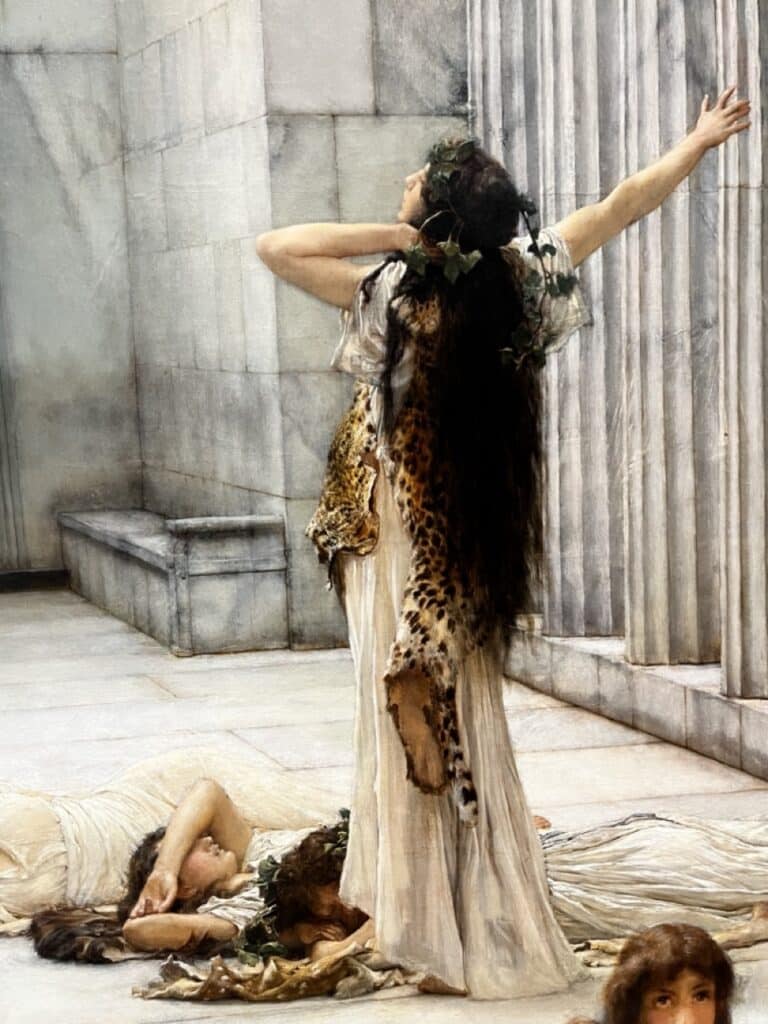
The morning after, detail from The Amphissian Women by Lawrence Alma-Tadema.
It appears the Amphissian women formed a circle around the sleeping, strangely dressed women, the primary purpose of which was to keep the strangers safe from the garrisons of soldiers stationed in the center of town.
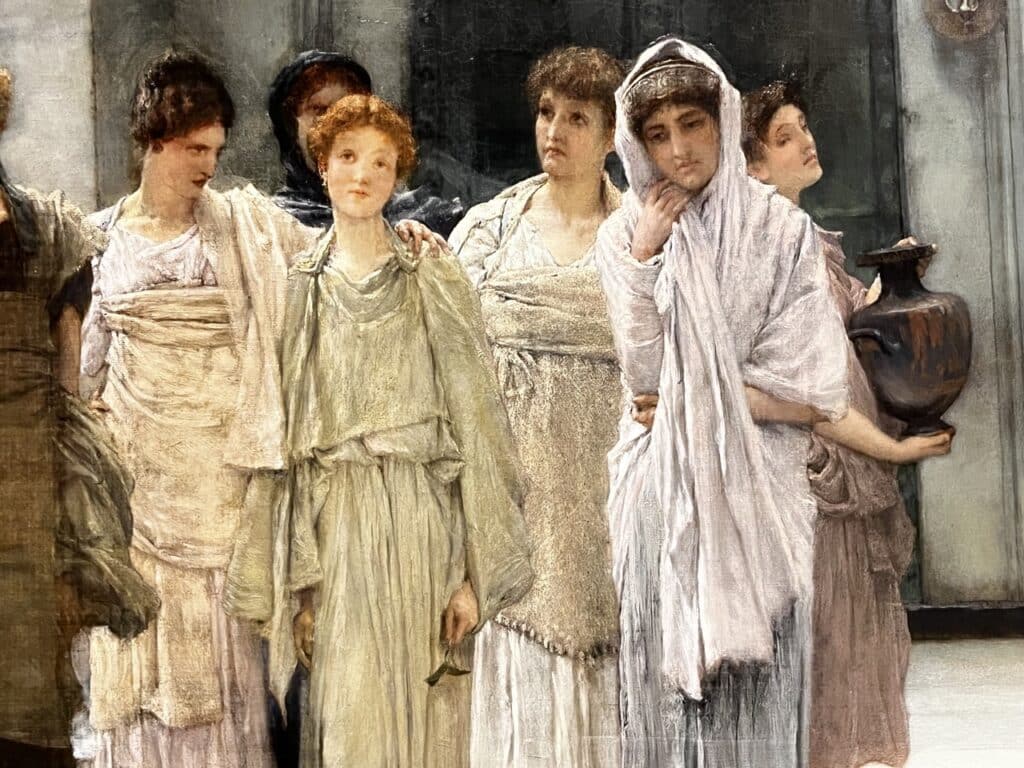
Detail from The Amphissian Women by Lawrence Alma-Tadema.
Though he keeps it super subtle, Alma-Tadema casts us, the viewers, in the role of the Amphissian women on the other side of the circle, facing in toward the sleeping bacchantes.Although there’s no overt suggestion of immanent violence or danger, Alma-Tadema represents a moment of uncertainty, where no one knows what is going to happen after these strangely dressed, sleeping priestesses all recover.
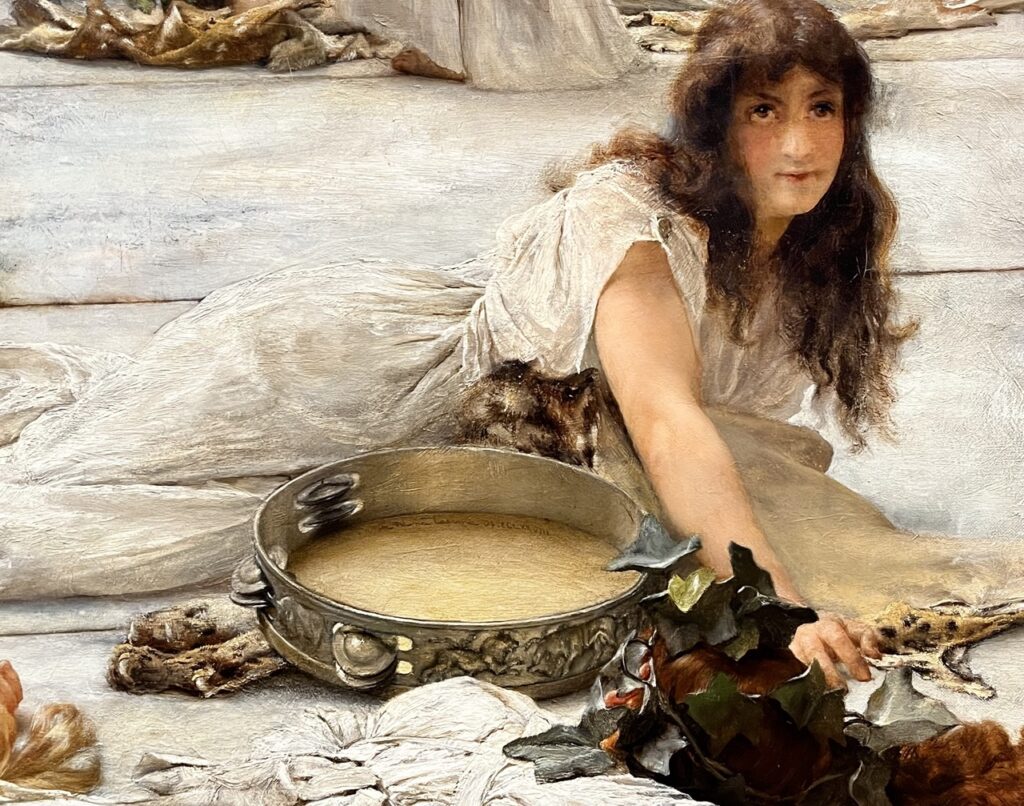
Detail from The Amphissian Women by Lawrence Alma-Tadema.
By the way, if we zoom back out again, it’s worth noting how simple and solid the composition of this painting is. It’s a centered, symmetrical oval with a simple criss-cross armature.
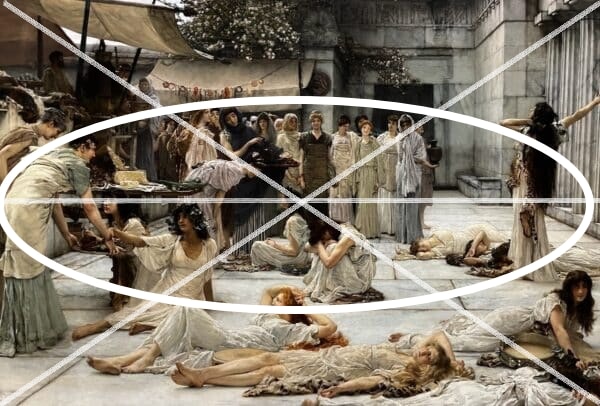
The Amphissian Women won the Gold Medal of Honor at the Exhibition Universelle in Paris in 1889. It may be seen in the permanent collection of the Clark Museum in Massachusetts.
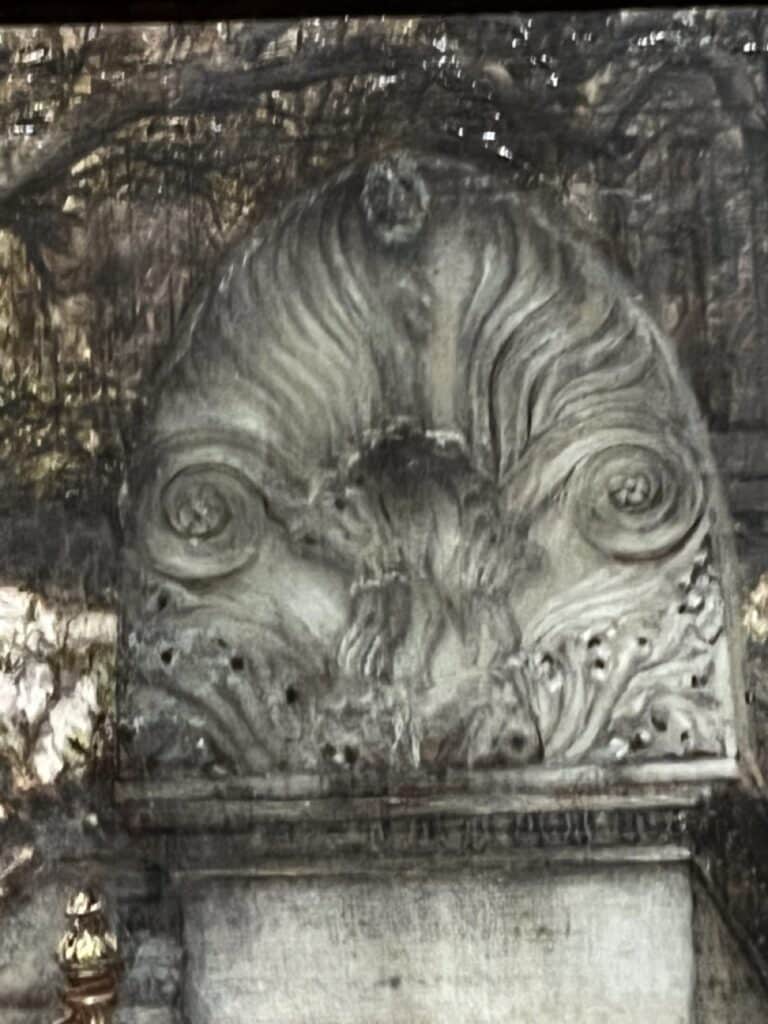
Detail from The Amphissian Women by Lawrence Alma-Tadema.

